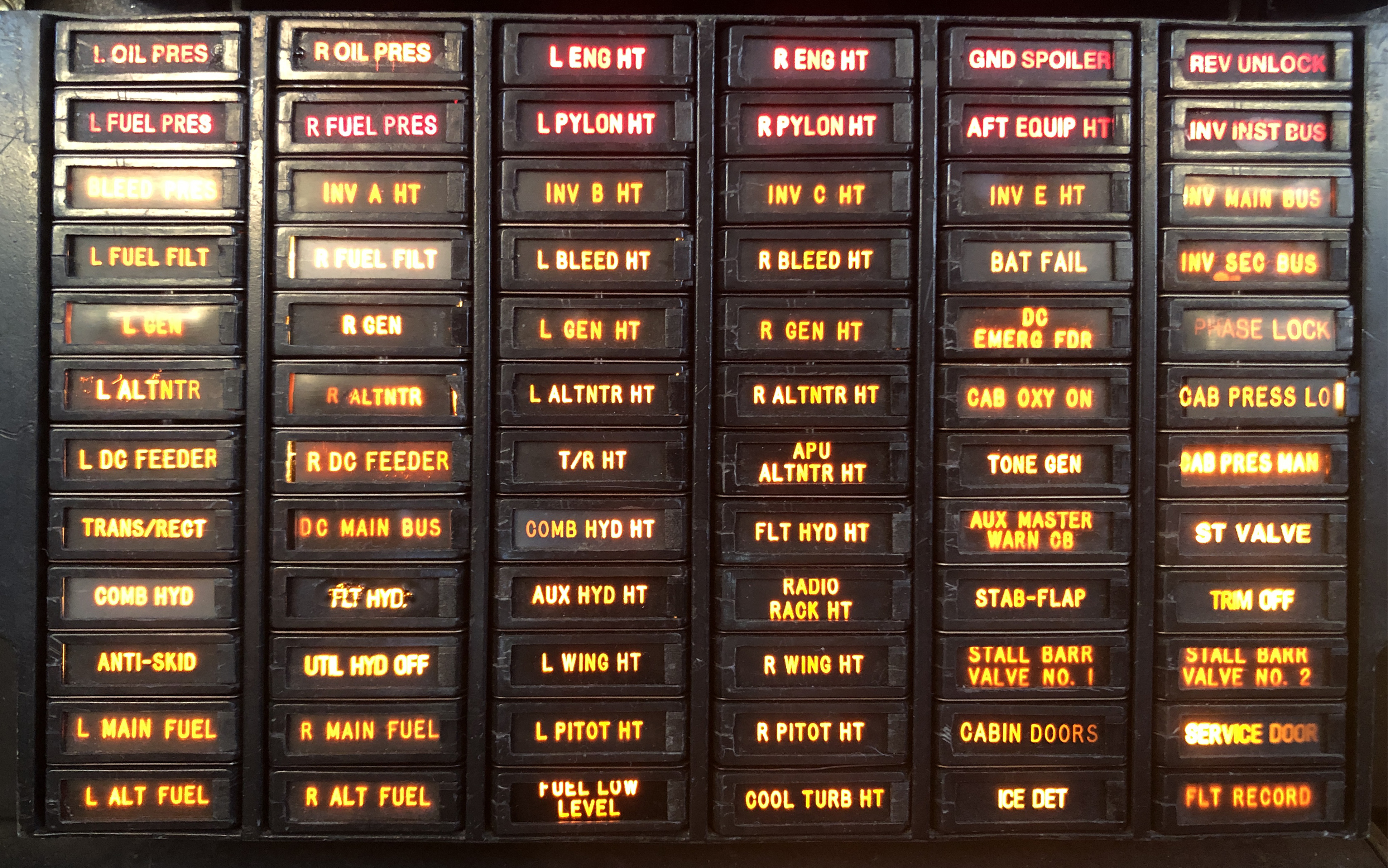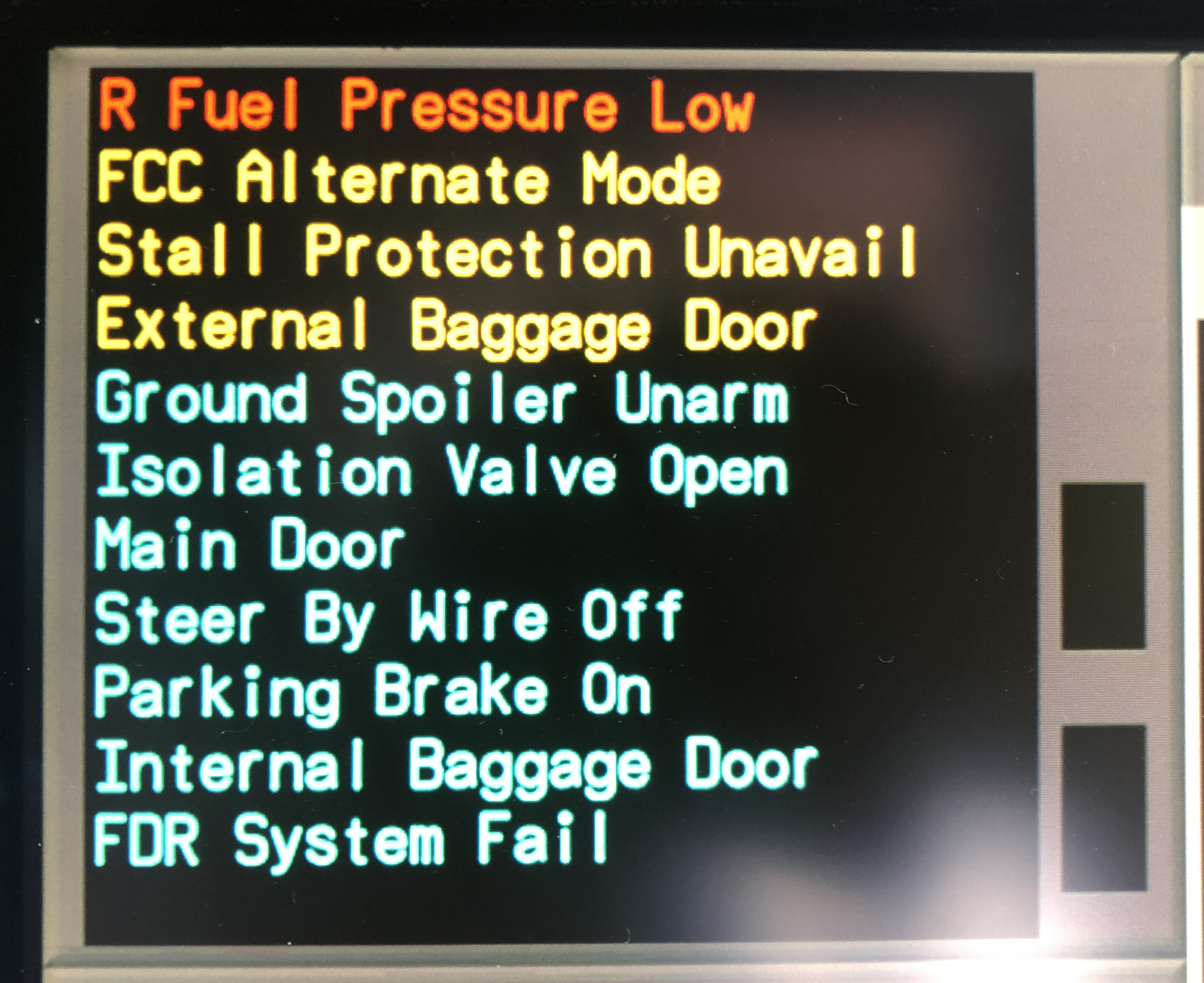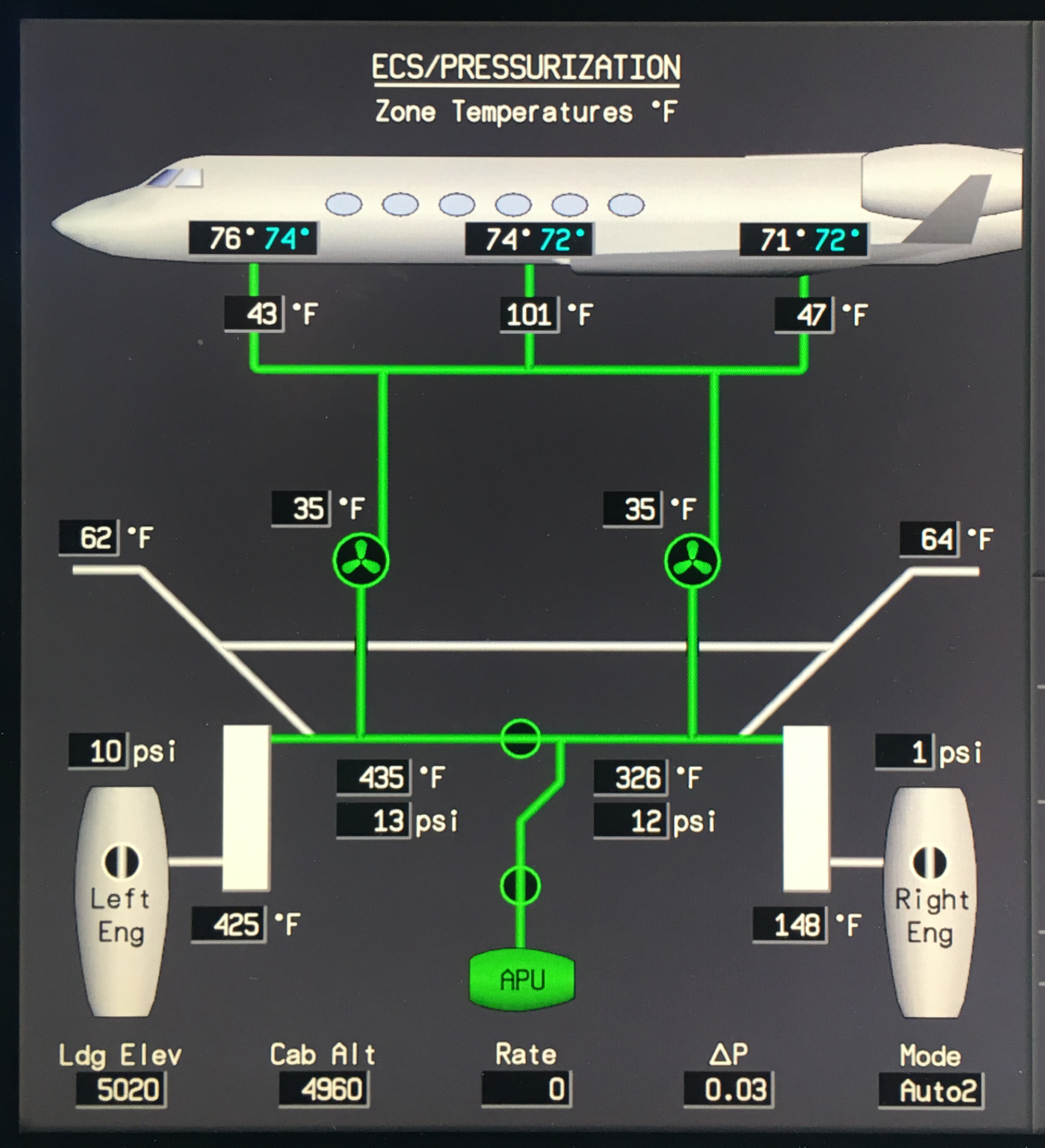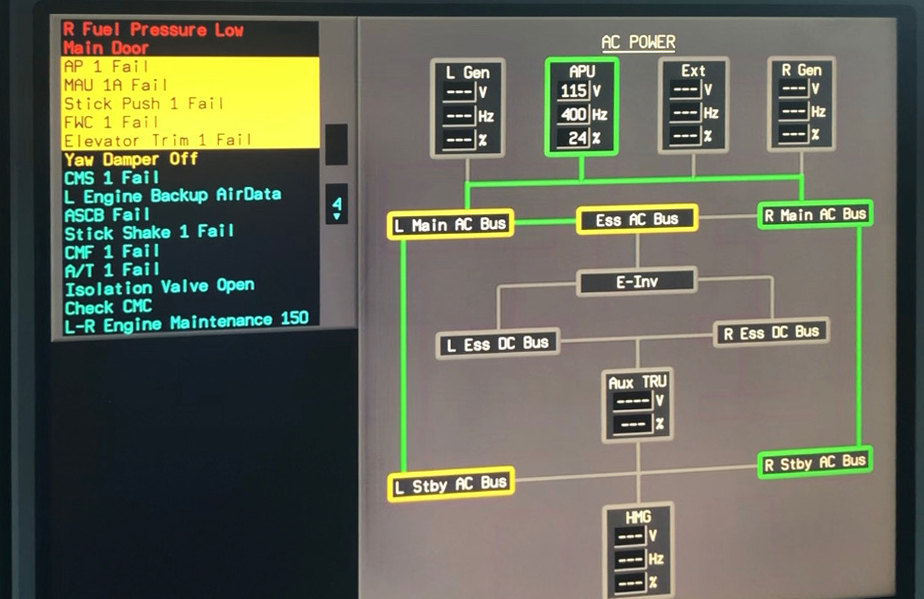My first Gulfstream was a GIII, before the days of modern "full glass" electronic flight instruments. Instead, it had 72 capsules in a master caution panel. That seemed like a lot compared to earlier aircraft without a master caution panel of any kind. Nonetheless, I dove into the books and wrote a guide on what each of those capsules was telling me, and what I should do about it.
— James Albright

Updated:
2020-10-22
Fast forward a few years and the master caution panel has given way to the Crew Alerting System (CAS) and, in my latest aircraft, the number of possible messages is in the hundreds, perhaps over a thousand. The Gulfstream GVII does not have a Quick Reference Handbook but our Aircraft Flight Manual is organized so as to turn any of those hundreds of CAS messages into what the message means, what to do about it, and what the implications are if you can't fix it. The Master Equipment List also contains a section to turn those CAS messages into "what to do about it" for us pilots who had a hard enough time dealing with just 72 things.
But, even with all that automation, we still get confused. What follows is a short story of an oddball CAS in the middle of the Pacific from fifteen years ago, a cascade of messages from earlier this year, a few from fellow travelers, and a plan for dealing with it all.
From 15 Years Ago
I was flying a GV from Anchorage, Alaska to Shanghai, China somewhere along the North Pacific routes about two hours from the nearest possible divert airport. The airplane had been behaving but then we got the following red CAS message:
FUEL TANK TEMP
I was in back talking to the lead passenger. When I returned, the flashing message caught my attention and I found the contract pilot in the right seat staring blankly at the horizon. "When did that come on?" I asked. "When did what come on?" he asked.
According to the synoptic, the fuel tank temperature was -10°C and there was no evidence of fire or any other reason to suspect hot fuel in the tank. After ten minutes the message went away. I made several phone calls to our mechanic and to Gulfstream and the initial reply was always, "Are you sure?"
After a day of this I was starting to doubt myself. Was I sure? As it turns out it was a corroded canon plug between the sensor and the cockpit. The fuel wasn't hot or cold, the warning system was at fault. Nonetheless, I started flying with a digital camera. (This was before cell phone cameras were common.)
More Oddball CAS Messages and Other Oddities
I realize I am not alone in this. Here are a few oddities submitted by readers:
Global versus Gulfstream G650 CAS Oddities
James,
In the Global Express, after the APU GEN came online, we sometimes agonized while staring at the CAS for 10 minutes or so while numerous messages came and went. Only after we saw a familiar stack of messages did we breathe a sigh of relief. If there were any out of place CAS messages then we began the process of attempting to reset them. That process often times included having to power down, wait for 10 minutes, and power back up. To me that CAS exemplified whether I was going to have a good day or not. A few years after my last flight in a Global I learned that Bombardier put something in writing to the effect of “ignore all CAS messages for 10 minutes or so while aircraft systems perform and complete their respective BIT."
I am attaching a picture of what I expect to see in the G650 once the APU GEN in online. So far the G650 has been very good. Every once in while we get a momentary Cyan CAS message but GAC knows about them and expects to have them fixed with Block 3.
A G650 pilot
Mysterious G450 Cowl Anti-Ice
James,
If a picture is worth a thousand words, a video is worth a thousand pictures. We were unable to figure out why our G450 had low manifold pressure prior to engine start. After we brought on the APU our pressure was only 15 psi, about half what we needed to start the engines. We turned off both air conditioning PACKs and the pressure went to 50 psi, which is normal for an unloaded APU at our airport's pressure altitude. We turned the PACKs on, the pressure dropped to the low twenties but after a few seconds recovered to 29, which is about normal. In the heat of the moment, we just couldn't figure out what was causing the problem. But we took a video to help our maintenance crews with the troubleshooting. Replaying the video, we noticed odd pressure readings from the left engine cowl anti-ice. It appeared stuck open and was grabbing all the air. It was finally determined that the problem was caused by a dirty check valve on the line that provides the muscle air that closes the left cowl anti-ice valve. The muscle air line wasn't able to provide sufficient flow to close the valve, hence the “leak” out the cowl. Apparently cycling the PACKs provided enough of a pressure bump in the system to allow the anti-ice valve to close and return the system to normal operation.
A G450 pilot
The lavatory that took out an electrical system
Another G550 operator tells me they had an incident where flushing the lavatory toilet would cause an electrical fault sure to ruin your day:
Here is what they finally determined was causing it all:
"It was eventually troubleshot down to an internal short in the lav vacuum motor, which I believe is on the Left Main AC Bus. When the flush was pressed the BPCU detected the short and momentarily isolated the bus to protect the system, which momentarily also unpowered the L Stby AC Bus as well as the Ess AC Bus. You can see the stack of CAS Messages, including MAU 1A Fail. From the crews perspective they associated the lav flush causing a MAU 1A failure."
A Plan For the Future
The Plan
- Take photos of all synoptics under normal conditions. If you do this on your phone you will always have a ready reference of what normal looks like when you suspect things are anything but.
- Catalog what CAS messages you see on a routine basis. In our G450 we became accustomed to 2 red, 3 amber, and 5 cyan messages remaining prior to engine start. If we found ourselves with more (or even less), we knew something wasn't right.
- Figure out which CAS messages have already been explained and have an accepted solution short of cancelling the trip, diverting the airplane, or pressing the "Panic" button. Gulfstream issues "Frequently Asked Questions" as a way of disseminating information about known issues. It is an ever changing product, especially for brand new aircraft.
- Keep a log of your unusual CAS experiences. Most mechanics frown upon you keeping an informal maintenance log but I've learned over the years it can be invaluable. I just hate it when I get an oddball CAS message that I've seen before but have since forgotten if it is anything to worry about or if there is an easy fix.
A Recent Example
I try to take photos and videos of just about everything under normal conditions, so I can later recognize what is normal and what isn't. Years ago, for example, we had a landing gear door timing valve go bad but we didn't know that. What we knew was that it was taking an extra two seconds to retract the gear. Gulfstream said we were within tolerance. I set up a video camera to record the aircraft's aft looking cameras to find one of the gear doors was hanging up. They said the door's movement was within the tolerance allowed. I had the same video from the year prior and demonstrated that the door was doing something it hadn't before. Based on all that we had them swing the gear in the hangar to see for themselves, the right gear was taking too long to extend. They agreed finally and found the bad timing valve.
Note: I took the video, we used it to convince the people who made these decisions to make the right decisions, and then I was warned that I shouldn't be taking videos or photos in their facilities.
So here I am with a new airplane: fire up the GoPros! One day I saw a CAS message after landing which concerned me. I rolled back one of the videos and found out it was normal after all. Here is what we see on a "normal" day:
- Prior to landing: "Autobrake Medium," "No Smoke On," and "Seat Belt On"
- After landing: "Autobrake Disarmed" followed by "Autobrake Medium" going out
- During rollout below 60 knots for just a few seconds: "Windshield Heat On"
- During rollout below 40 knots: "Autobrake Medium" goes out, "FCS Test In Progress" goes on for a few seconds, then "Check CMC" which remains until the CMC is checked.
- Several minutes later: "AC MPT 3 Fault," "DC MPT 7-12 Fault," "DC MPT 1-3-5 Fault," followed by "DCN Maintenance" for a few seconds.
- A few seconds later, "AHRS 2 DG Mode" for a second.
- A few seconds later, "APU Generator On"
So it seems like a pretty good plan: take photos and videos of everything when it is normal, then take videos and photos when things don't appear normal. Share what you have when troubleshooting. It is harder for manufacturers to argue with a photo.
The Plan in Action
We were flying our very first passenger flight on our brand new Gulfstream GVII-G500 and the first leg went well. The second leg was from Burbank, California to Washington Dulles, VA. We made the flight in 3 hours 40 minutes at 0.90 Mach. But the excitement came at the 2 hour mark:
The "HUD Comp Fan Fail" came on much earlier and was a known issue at the time. The rest of the cyan messages came on within a few seconds of each other. Cyan, yes. But all of them in just three seconds? The photo is shaky because it was late at night and my iPhone needed a slow shutter speed to get the shot. I texted it via the aircraft's Internet to our mechanic. He established a conference call with Gulfstream and we had help waiting for us when we landed.
Since then we've seen three of these CAS messages again and have a better idea of what the problem is. We are still learning.







